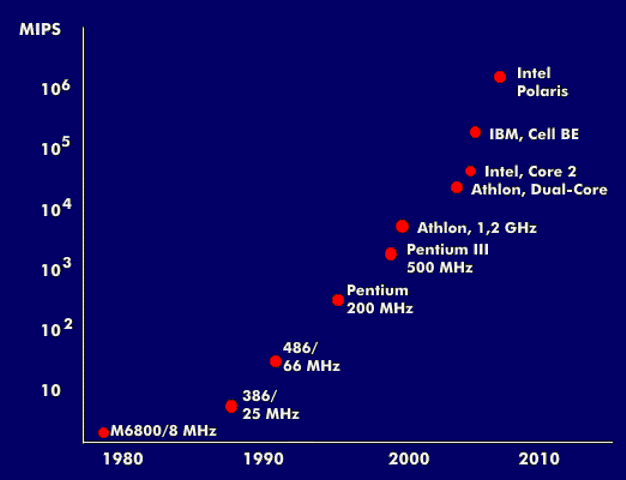million instructions per second (MIPS)
Million Instructions Per Second (MIPS) is the unit for the computing power with which a microprocessor or computer executes instructions. It is calculated by dividing the number of instructions executed during the execution of a program by the time taken to execute the program. It is given in millions of instructions per second (MIPS).
Since the MIPS specification is influenced by many factors such as the internal clock frequency and the data word width of the data bus, but also by the number of instructions that a processor can process per second, as well as by the efficiency with which the instructions are executed, comparability between processors via the MIPS is not relevant and says nothing about how many instructions are required to execute a task. For these reasons, the specification in MIPS is no longer in use. The Cycles per Instruction( CPI) and Instructions per Cycle( IPC) specifications are used.
When comparing the MIPS values of computers, it is quite conceivable that computers with a lower MIPS value need less time to execute a certain program than those with higher MIPS values. This is simply because certain computer architectures require fewer instructions for program execution.
The evolution of MIPS values paralleled the number of active components on a chip. With the earlier 8-bit and the first 16-bit processors, performance was still measured with kIPS, i.e. one thousandth of a MIPS. The first Intel 8080 had about 640 kIPS, the 80386 already 3 MIPS. While the Pentium 4 with a clock frequency of 3.2 GHz reached 10,000 MIPS, the Intel dual-core processor already has 50,000 and the Intel Polaris 1.8 million MIPS.

